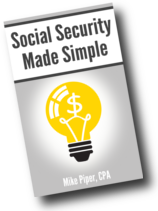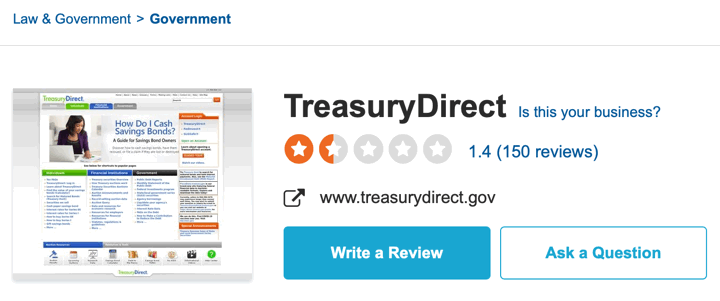I picked a great time to be under-invested this time. The trick will be getting fully invested before the fall has reversed itself. My QQQ April $225 naked put doesn’t worry me long-term, even though it finished February almost $20 in the money. It’s less than a quarter of my account value, which leaves a lot of dry powder on the side if the weakness continues and stocks fall much deeper. The same goes for my TLT April naked calls that finished February more than $6 in the money. Both will reverse over time and I’ll work a profit. Call it luck or skill, but being under-invested makes the paper losses on these two positions easy to digest.
My account ended February with a Net Asset Value (NAV) of $95,754.02 according to Interactive Brokers (IB) after ending January with a balance of $99,683.66. I had a paper loss of $3,929.64 (-3.94{d9c4d960ee45891fbf714ed8da589b701a1be4efa840b87811584c6b796cb03f}) on paper for February (less than the Dow’s 10.07{d9c4d960ee45891fbf714ed8da589b701a1be4efa840b87811584c6b796cb03f} loss and more than the S&P’s 8.41{d9c4d960ee45891fbf714ed8da589b701a1be4efa840b87811584c6b796cb03f} loss). I had $387.40 in net realized gains in February from my QQQ naked put and also received $71.75 in interest. I received no dividends in February since I didn’t own anything that I was long.
Quicken reported that I have an account value of $95,680.03, which is the same as what IB shows after I add in the $73.99 in interest accruals that IB credits in advance of the actual payment.
I’m only 17.0{d9c4d960ee45891fbf714ed8da589b701a1be4efa840b87811584c6b796cb03f} invested in this account as of the end of February, 3.82 percentage points below the end of January. This percentage doesn’t match with my QQQ percentage below because it’s based on my cash balance as the denominator versus the asset allocation breakdown uses my account balance as the denominator. I have $79,479.25 left in uninvested cash and no options set to expire in March. This figure doesn’t include my TLT short calls because there isn’t an easy way to factor in shorting an ETF into this summary. Worth pointing out, I have $101,779.25 in cash. If my QQQ and TLT options are not assigned, this will be my account balance since it removes time value from the option positions. However, it looks more and more likely every day that I’ll be short QQQ before April expiration and might be short 500 shares of TLT the day before dividends are paid on the first day of April.
This is my asset allocation in my IB account as of the end of February 2020:
- Large-cap ETF: 23.29{d9c4d960ee45891fbf714ed8da589b701a1be4efa840b87811584c6b796cb03f} (including QQQ)
- Mid-Cap ETFs: 0{d9c4d960ee45891fbf714ed8da589b701a1be4efa840b87811584c6b796cb03f}
- Small-Cap ETF: 0{d9c4d960ee45891fbf714ed8da589b701a1be4efa840b87811584c6b796cb03f}
- International: 0{d9c4d960ee45891fbf714ed8da589b701a1be4efa840b87811584c6b796cb03f}
- Individual Stocks & Other Sector ETFs: 0.0{d9c4d960ee45891fbf714ed8da589b701a1be4efa840b87811584c6b796cb03f}
- Bonds: 0.0{d9c4d960ee45891fbf714ed8da589b701a1be4efa840b87811584c6b796cb03f} (not including my 5 TLT naked calls)
Morningstar stopped updating the page I’ve been using for the past decade to show a comparison of the indexes. I was able to dig up individual Morningstar pages for the Dow Industrials, S&P 500, and NASDAQ returns, so the list of indexes is shorter than it used to be. Anyway, here’s how I compare:
- Dow Jones: YTD change -10.96{d9c4d960ee45891fbf714ed8da589b701a1be4efa840b87811584c6b796cb03f}, 12-month change -1.95{d9c4d960ee45891fbf714ed8da589b701a1be4efa840b87811584c6b796cb03f}
- S&P 500: YTD change -8.56{d9c4d960ee45891fbf714ed8da589b701a1be4efa840b87811584c6b796cb03f}, 12-month change +6.10{d9c4d960ee45891fbf714ed8da589b701a1be4efa840b87811584c6b796cb03f}
- NASDAQ Composite: YTD change -4.52{d9c4d960ee45891fbf714ed8da589b701a1be4efa840b87811584c6b796cb03f}, 12-month change +13.74{d9c4d960ee45891fbf714ed8da589b701a1be4efa840b87811584c6b796cb03f}
My return according to Quicken through February 28, 2020:
- YTD Return: -4.25{d9c4d960ee45891fbf714ed8da589b701a1be4efa840b87811584c6b796cb03f} (not annualized)
- 1 Year Return: +7.92{d9c4d960ee45891fbf714ed8da589b701a1be4efa840b87811584c6b796cb03f}
The VIX ended the month at 40.11 and the VXN ended at 43.13. The VIX finished January 21.27 points higher than the end of December. The VXN finished 21.8 points higher. Both of these readings were more than double how they ended January. The VIX peaked on February 28, when it hit an intraday high of 49.48. The VXN peaked the same day, at 49.16. I’m less tempted to buy in this week than I was last month, even with the rich premiums. Maybe by the end of the week I’ll be enticed if we get further downside pressure before then. For now, I’m enjoying my large percentage cash position.
SOURCE: My Trader’s Journal – Read entire story here.









